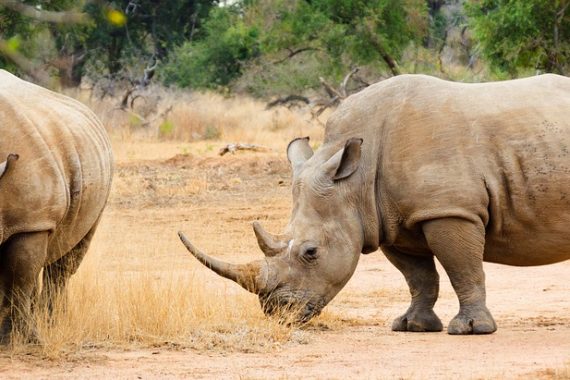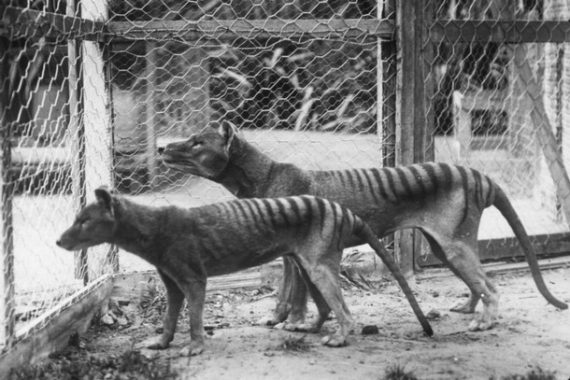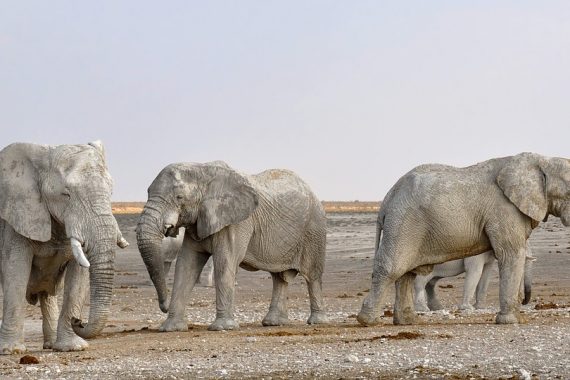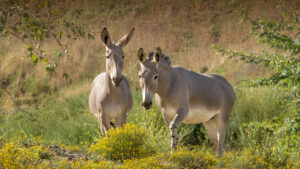
The endangered somali wild ass (image from San Diego Zoo)
The Somali Wild Ass is arguably one of the lesser well known endangered species from Africa. A subspecies of the African Wild Ass, it is found in the Southern Red Sea region of Eritrea, the Afar region of Ethiopia and the war torn country of Somalia. They live in semi-arid and arid bushland and grassland, grazing on grasses and other vegetation.
Wild Asses live in what are referred to as fission-fusion societies. Generally, adults live alone, but at times small herds will form, consisting of females and their young, often presided over by a dominant male. This type of societal structure largely forms in response to limited resources, forcing the animals together to forage. If any area is rich in resources, the small herds will often be seen mixing together to take advantage of whatever can be found in such depleted environments.
Males have large territories, sometimes reaching as much as 9 square miles, that they will mark with piles of dung. They have no problems allowing females in their range to graze, but other males that try to enter may face serious aggression if they try to mate with females. However, if the wandering male shows no interest in the females, the dominant male has been observed allowing males into their territory, providing they keep themselves to themselves.
A species on the brink
Today, there are likely less than 1000 individuals left in the wild, making this species critically endangered. Their largest threat is from hunting for food or use of their body parts for medicinal purposes. Soups will be made from their meat and bone, which are believed to be a cure for a wide range of serious disease from constipation and fever to tuberculosis. To compound the issues of unregulated hunting, regions like Somalia are incredibly dangerous and conflict-ridden, making it almost impossible to conduct any on the ground conservation or outreach, as understandably local people have bigger concerns than the continued existence of the species.
Although hunting is the biggest danger facing the Somali Wild Ass, livestock competition for forage and water resources is another major concern. As with much of Africa, locals in the regions where the Wild Ass are found rely heavily on livestock for their survival, and large numbers of cattle will easily outcompete a herd of Wild Ass. A lack of adequate food and water is a particular issue for females and their calves, as a pregnant mare of infant will succumb to dehydration and starvation much faster than a male.
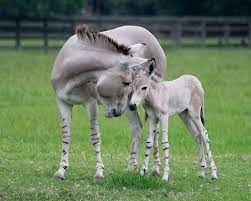
A Somali Wild Ass calf and mother at White Oak Conservation in Florida (image from White Oak Conservation)
One of the major organizations fighting for the Somali Wild Ass is White Oak Conservation, a scientific education and conservation center based in Florida that focuses their attention on incredibly rare and often overlooked species, such as the Florida panther, Mississippi Sandhill Crane, Bongo antelope and of course the Somali Wild Ass. In 2008, the center acquired their first herd, and have produced 18 foals since then. Although these breeding populations are vital, White Oak also aims to support on the ground conservation in the home range by supporting local communities and scientists.

Zoo Basel in Switzerland are another organization with another important breeding programme. They hold the European studbook for the species, and coordinate the European Endangered Species Programme. They obtained their first herd in 1970 and achieves their first captive birth in 1972, and all captive individuals in the world are related to the Basel individuals.
On the ground in Ethiopia, Somali Wild Ass are found within the protected reserves of Yangudi-Rassa National Park and Mille-Serdo Wild Ass Reserve, although despite the name, these so called parks are not officially fenced off and are heavily utilized by pastoralists and their livestock, which directly compete with the Wild Ass for resources. Additionally, these remote and arid reserves are poorly managed, as the Ethiopian Wildlife Conservation Authority, despite their best efforts, simply do not have the adequate funds or personnel to manage the area.
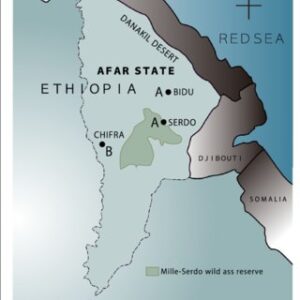
The location of the Mille Serdo Wild Ass Reserve in Ethiopia (image from Kimura et al)
In Eritrea, the government are beginning to understand the plight of the species, and two large areas, the Buri Peninsula and Dalool Depression are designated as high priority conservation areas, and are looking to develop conservation initiatives in this area, engaging local communities with this work.
Unfortunately, there are no protected areas in Somalia, and given the social and political upheaval and terrible human suffering in the region, it is unlikely anything will be done soon.
Across their entire range, more research is needed on this neglected species to understand the human-livestock-widllife interactions and how best to protect the Wild Ass against the intense competition they are facing. More awareness and education is needed for the species and the engagement of locals by employing them as guides and guards. Developing more sustainable livelihoods for locals will be essential for the survival of this species.
Awesome videos!
References
Bonner, J. (2008) ‘What’s the zoo to do with its Somali Wild Ass problem?’ Saint Louis Zoo
Equus africanus (African Wild Ass) (iucnredlist.org)
Kebede, F. (2015) ‘Research and community based conservation of the African WIld Ass in the Danakli Desert of Ethiopia: Field Report.’ Zoo Basel
Moehlman, P.D. Yohannes, H.Teclia, R. Hagos, F. (2017) ‘Reports to Basel Zoo – African wild ass: population dynamics, distribution and status in Eritrea.’ Zoo Basel
Somali Wild Ass Research Project in Eritrea (2014) Conservation Projects, Zoo Basel
MASSIVE THANK YOU TO RACHAEL DA SILVA FROM THE UK FOR THIS WRITE UP! PLEASE FOLLOW HER ON INSTAGRAM AND HER WILDLIFE ARTWORK AT TILLY_MINT08


